It’s August and teachers everywhere are getting their Waldorf classrooms organized for the year. A disorganized, messy classroom can really throw things off and interfere with your students’ learning and your own peace of mind.
So, I thought I’d write a little post about the things to think about when it comes to organizing your Waldorf classroom. (I also really love that Marie Kondo’s name has become a verb. Now that’s true success!)
I tend to think about classroom organization by thinking about the supplies that are in our classroom. For me, that looks like this:
- Books
- Pencils and crayons
- Paper
- Main Lesson Books
- Painting Supplies
- Circle and Movement Supplies
Books
When organizing your books, you really need to think about your reading practice plan. Will you have books simply available in the room so students can walk up and choose one as they wish? In the upper grades, your students might have a chapter book in progress that they keep in their desks. Whatever it is, you need to imagine your students reading practice experience, and arrange the books accordingly. Here are a few examples.
1st grade — In first grade we didn’t really have a reading practice time. Books came out when we had some transition time or when a student needed some time in the cozy corner. So I had a couple of areas with books on display for students to choose from — and one of those areas was right next to the cozy corner.
2nd grade — This was when our reading practice time really took hold. When I thought about that practice time, I realized that I needed to have a lot of intention around the books that my students were reading. They needed to read books at the right level to make sure that their skills progressed. So I ended up using a system of “book boxes.”
Check out this post about my 2nd grade Waldorf classroom set-up for more info about this system.
The students each had a box with a selection of books that their parents and I helped them choose. This meant that students always had appropriate reading books picked out and ready to go. After spending years in the upper grades when students would sometimes spend the whole reading period finding a book to read, I knew that having books ready to go would be a huge plus.
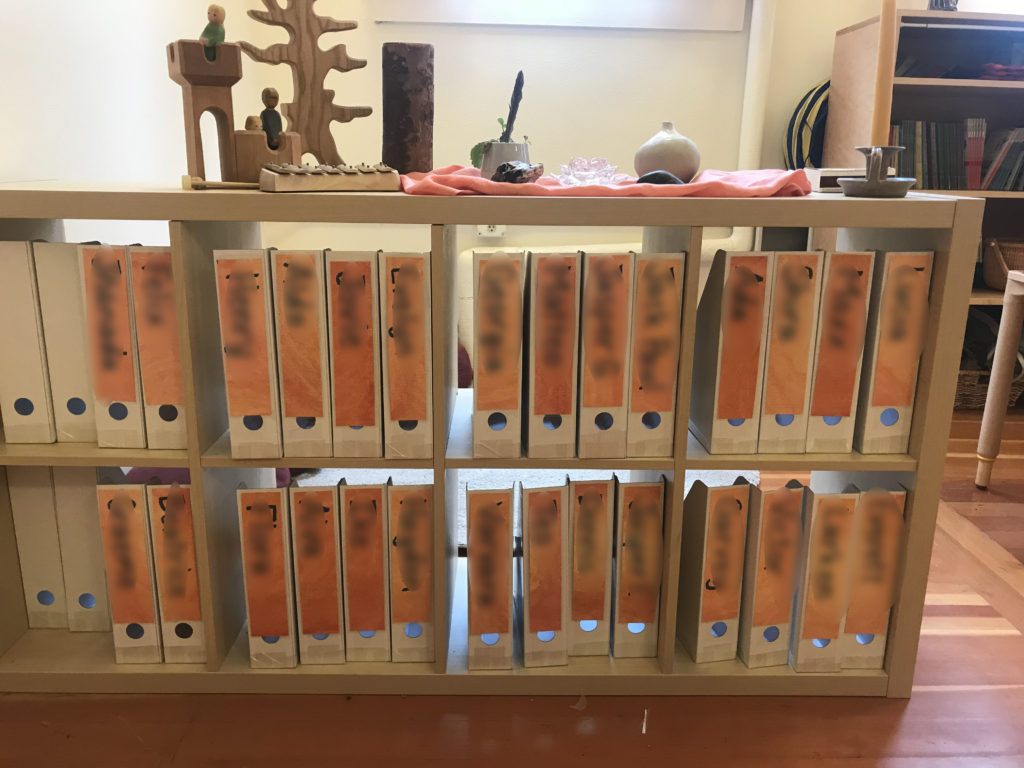
5th grade — In 5th grade, my students were required to keep a reading book in their desk at all times. I wanted them to have a book that they could quickly pull out during in-between moments, and they were such voracious readers at this age, they wanted to grab every minute they could. We had an accountability system so I could track what they were reading (making sure they didn’t give up on too many books mid-way through.) When it came to displaying books in the room, I had a shelf of books that were our class readers. These were generally not books students would just read on their own, but they sat on the shelf ready to be handed out when we were reading them together as a class. They looked enticing up on the shelf, so students looked forward to having them handed out. I kept other chapter books on the shelves for them to choose from as needed.
Pencils and Crayons
When it comes to writing utensils, the biggest question is whether each student is going to have their own set and if they are going to keep them in their desk. And, if so, what kind of pouch will they use. Here are some various approaches.
1st and 2nd grade — In these grades my students did not have their own set of crayons. We had crayon rolls that were handed out every time we needed them. I had thought about putting students’ names on them for 2nd grade, but they had learned to take such good care of their supplies, that it just wasn’t necessary. We also handed out colored writing pencils and graphite practice pencils as necessary, and stored them in little galvanized buckets in the meantime. I took this approach in large part because my students did not have desks for storage. In first grade we used the moveable classroom and in 2nd grade we worked at tables. In the end, though, I preferred it because it meant I could keep better track of the supplies and make sure they were taking care of them. In 3rd grade we’re using the same supplies but students will have their own crayon rolls and writing pencils.
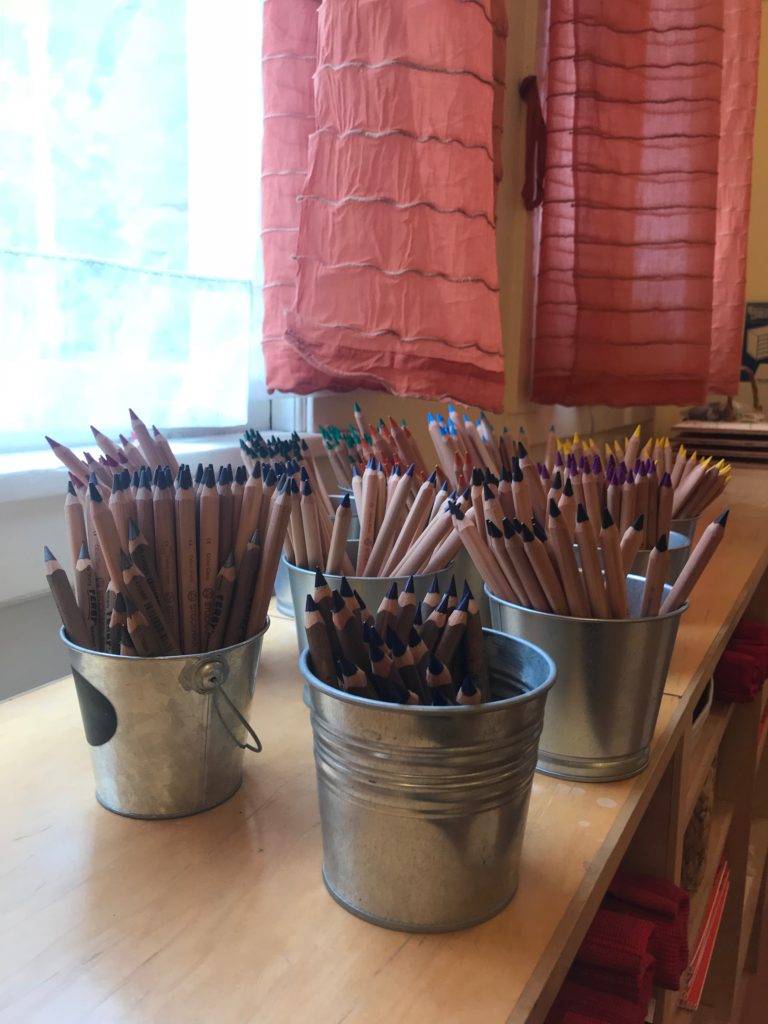
4th-6th grade — In these years students had their own sets of colored pencils. No more crayons, but my favorite Ticonderoga practice pencils and a pen for main lesson work. I used different pouches, depending on what I could find. You’ll find photos below.
- Zippered pencil pouch (used in 4th grade)
- Round pencil pouch (this is the closest I could find to what we used)
- Global Art Pencil Case (for the upper grades)
7th-8th — The supplies that they had available changed in these grades, as did the storage. Every student had a nice pencil storage system that they used for both 7th and 8th grade. I felt fine spending a little extra knowing it would last them two years.
Paper
In the lower grades I like to have free-drawing paper and lined writing paper. In first and 2nd grade this paper was stored on a shelf behind a curtain, so it was accessible to students, but hidden away so they didn’t have free-rein. This year I’ll have a drawer where I can store that free-drawing/scrap paper that kids can easily dive into as needed. I also have a paper tub that has various types of paper for crafting. We pull out that tub during our free-rendering lessons.
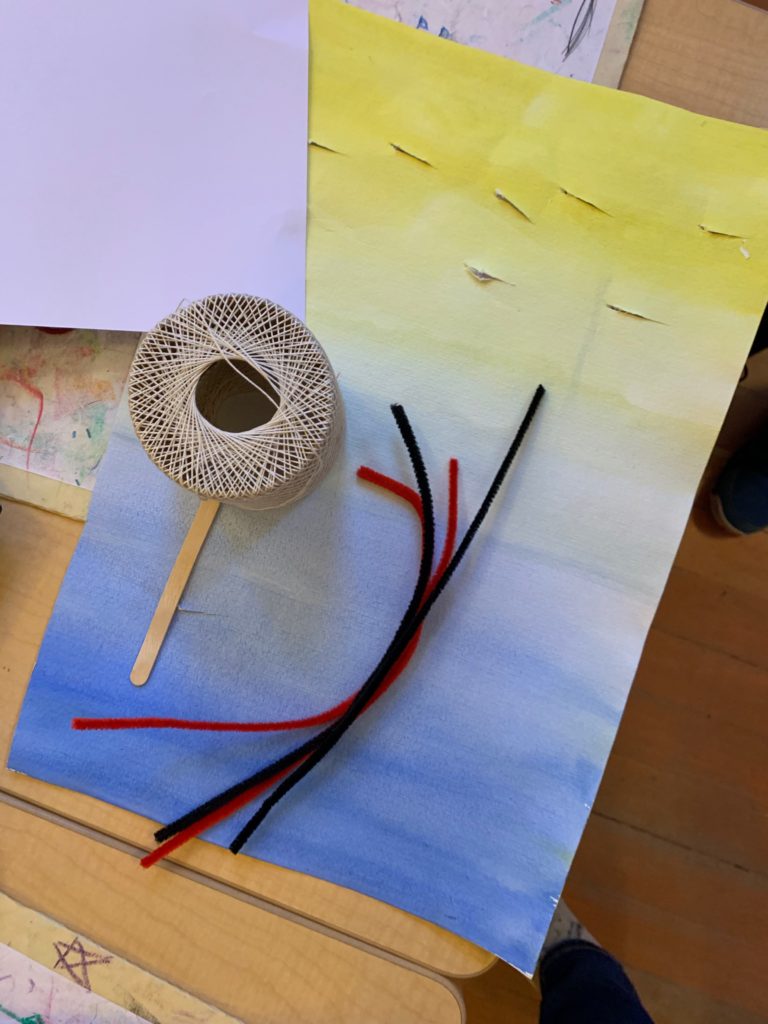
In the upper grades we were a bit more organized with the paper. We had stacking document trays from the office supply store that held wide-ruled notebook paper, graph paper and main lesson paper (we worked on loose sheets in the upper grades.) It was a student’s chore to restock the supply a couple times per week.
Main Lesson Books
I’m a firm proponent of NOT having students store main lesson books in their desks. Unless you’ve got a strict schedule for cleaning out desks and following up with students about it (which you should have anyway, I suppose), I suggest storing main lesson books on shelves in the classroom. It is just too easy for papers to get crunched up in desks.
In first and second grade I had a set of shelves for each row and the crayon pouches, main lesson books, writing folders and practice books were all stored on those shelves. When it came time to work, we had systems for handing out supplies, so it was all very tidy.
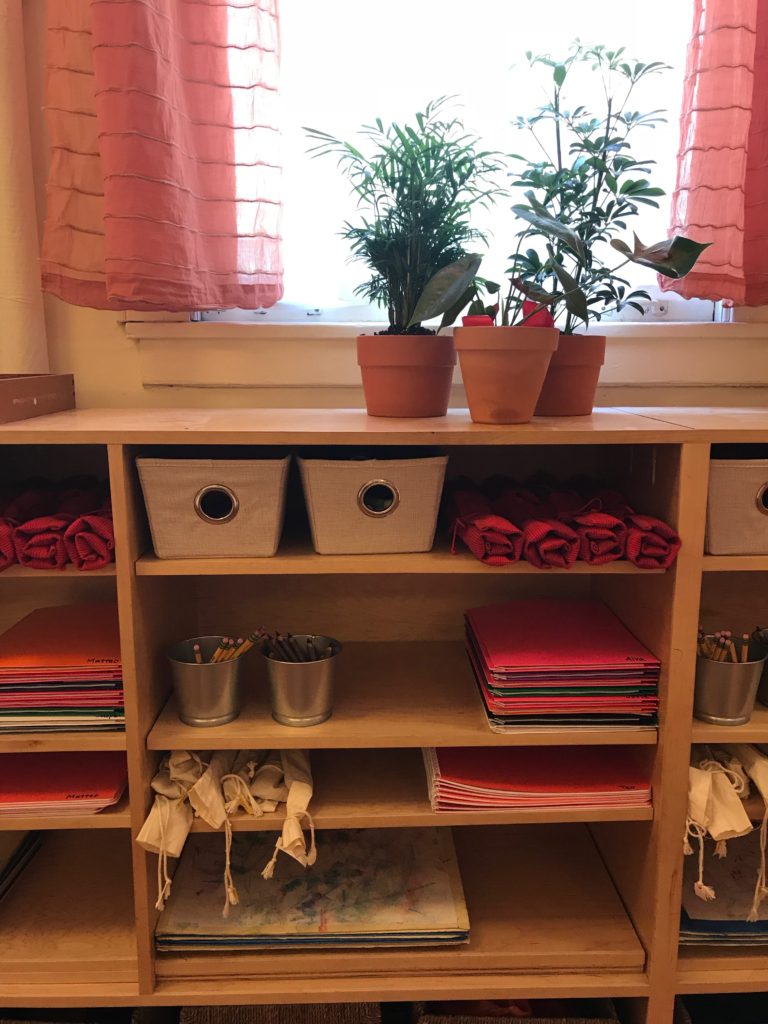
In the upper grades, we have slotted cubbies for individual student storage. This works well because our middle school students do not have desks (they work at tables to help support social learning) so they need another area to store their supplies. This does mean that they have to get up and go get their supplies when it’s time to begin working, but by then they’re generally ready to get up and move about the room anyway.
Painting Supplies
At our school, every classroom has a painting cart with space for storing painting boards, jars and paints. Teachers have different systems for managing paint distribution and there are a few challenges to think through that can impact how you store your paint.
Free Art Supplies List
This is a fantastic, very comprehensive list of the art supplies that are recommended throughout the grades. Entering your email address will also put you on the A Waldorf Journey updates list.
Keeping the colors clear — In 1st and 2nd grade, I mixed the paint ahead of time in ketchup bottles that I stored in the refrigerator. Every painting lesson, I squirted a little bit of paint into small dishes that fit into wooden painting blocks. At the end of every painting lesson, the students poured whatever was left into their water jar. This meant that they got fresh, clean paint at the beginning of every painting lesson. The sacrifice was that there wasn’t a collection of pigment in the bottom of the dish for the to tap into in our painting lesson. But, I considered this kind of artistic flexibility unnecessary for 1st and 2nd grade. The benefit of having clear paint was more important.
Stinky paints — This is another drawback of using the same paints week-to-week. My teenage Waldorf alums still groan about the stinky blue paint. Many teachers store blue paint in the refrigerator (or all paint for that matter) to prevent it from going bad. Depending on how many paint sets you have, this can be tricky. But most of our Waldorf classrooms have a small refrigerator in the room just for this purpose.
I should mention that there are other art supplies to think about here. Scissors, beeswax, clay, glue sticks, scotch tape, etc. all need a place in the room. In 2nd grade, we did so much free-rendering, I created what I called “crafty bins” that held all of these things and were stored on the row-by-row shelves.
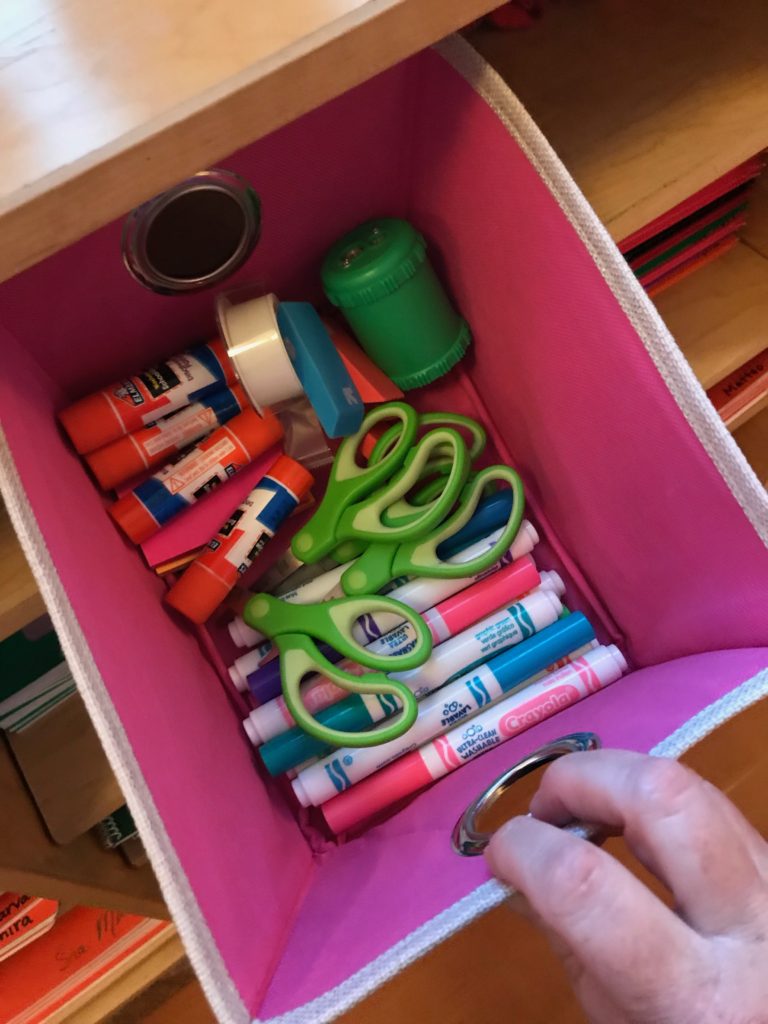
Circle and Movement Supplies
When I started teaching in the lower grades, I was astounded by the extra supplies that can be useful to have around for circle activities. In addition to flutes (which we store on the row-by-row shelves), we have baskets of rhythm sticks, beanbags, bouncy balls, string games, and silks for costumes. I love keeping these things in baskets on shelves in the my Waldorf classroom. One thing to bear in mind — make sure those shelves are accessible when the students’ desks are moved out of the way for circle. Invariably I found myself squeezing behind desks and scooting them out of the way to reach the basket I needed.
Well, that’s it. What are some of your favorite ways to store supplies? Share in the comments. And I’d love to see photos! Head over to our Facebook group and share your classroom organization photos to inspire the rest of us!






I just adore you and your approach. I taught as a Waldorf teacher for two years and am now a full time mom. I question going back to teaching someday-but you definitely keep the possibility alive for me with your clarity and joy.
Thanks so much for the sweet comment! Loving the work makes it easy. Hope you get back in the classroom soon! The world needs more great teachers!